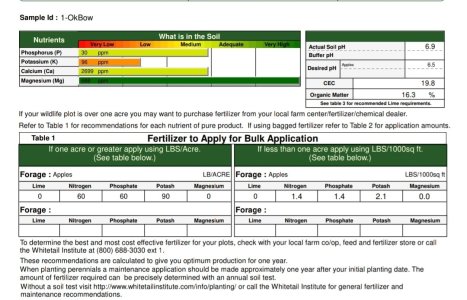I will have to give that a try depending on how this one turns out.
Below is a soil test from a different area i sprayed this fall. It was reed canary dominated low ground next to a pond on the property. Its an area that got pounded early this fall due to heavy acorn drop. It's low ground but the soil test was more promising than the location I planted this spring.
Anyway I was hoping to frost seed the new spot with clover but was curious on thoughts on that. Also considering adding a nurse crop. Just not sure how to think about establishing clover in the spring in that location.

Below is a soil test from a different area i sprayed this fall. It was reed canary dominated low ground next to a pond on the property. Its an area that got pounded early this fall due to heavy acorn drop. It's low ground but the soil test was more promising than the location I planted this spring.
Anyway I was hoping to frost seed the new spot with clover but was curious on thoughts on that. Also considering adding a nurse crop. Just not sure how to think about establishing clover in the spring in that location.


